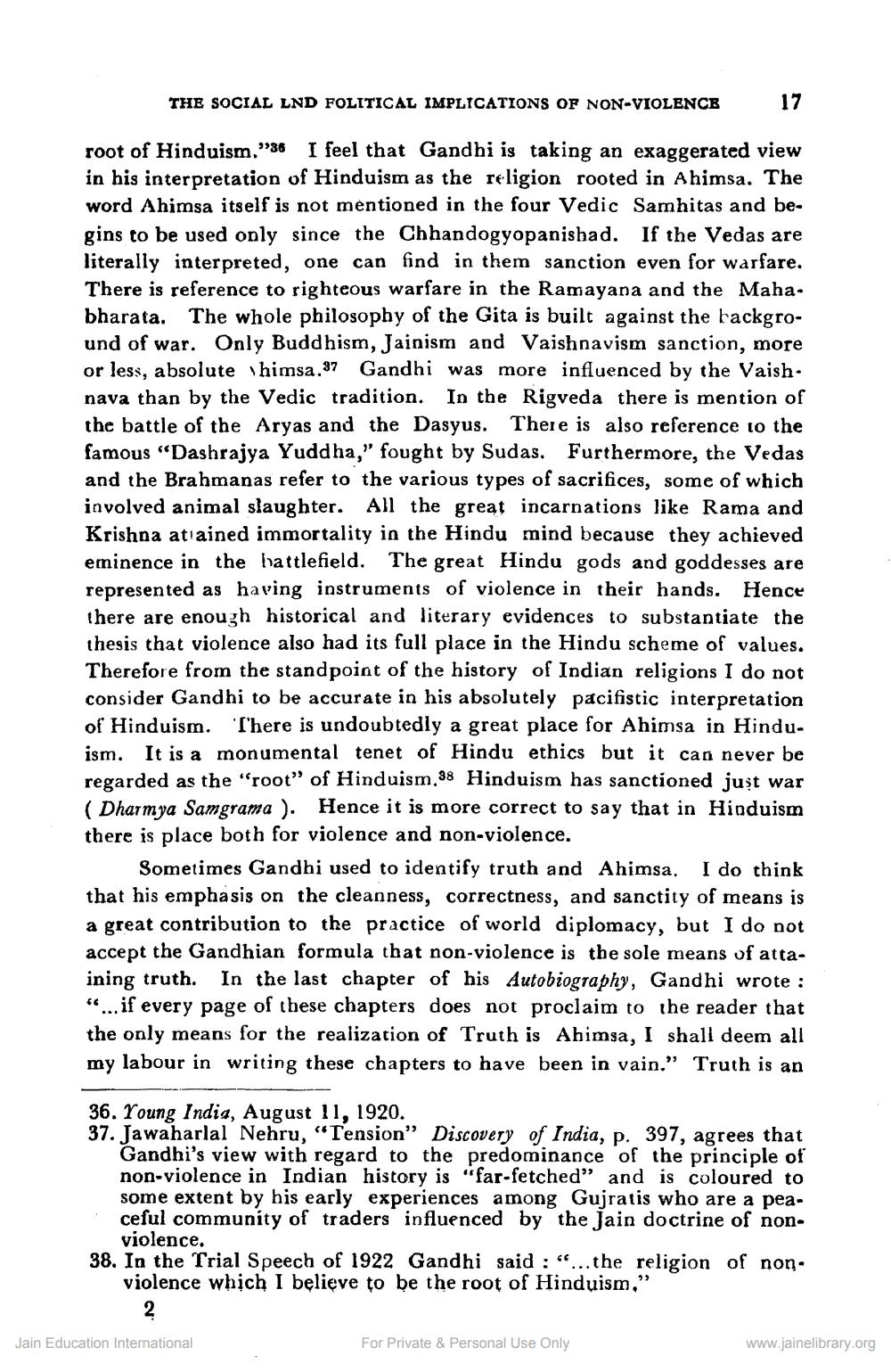________________
THE SOCIAL LND POLITICAL IMPLICATIONS OF NON-VIOLENCE
17
root of Hinduism.”36 I feel that Gandhi is taking an exaggerated view in his interpretation of Hinduism as the religion rooted in Ahimsa. The word Ahimsa itself is not mentioned in the four Vedic Samhitas and be. gins to be used only since the Chhandogyopanishad. If the Vedas are literally interpreted, one can find in them sanction even for warfare. There is reference to righteous warfare in the Ramayana and the Mahabharata. The whole philosophy of the Gita is built against the background of war. Only Buddhism, Jainism and Vaishnavism sanction, more or less, absolute himsa,37 Gandhi was more influenced by the Vaish. nava than by the Vedic tradition. In the Rigveda there is mention of the battle of the Aryas and the Dasyus. There is also reference to the famous “Dashrajya Yuddha," fought by Sudas. Furthermore, the Vedas and the Brahmanas refer to the various types of sacrifices, some of which involved animal slaughter. All the great incarnations like Rama an Krishna atlained immortality in the Hindu mind because they achieved eminence in the battlefield. The great Hindu gods and goddesses are represented as having instruments of violence in their hands. Hence there are enough historical and literary evidences to substantiate the thesis that violence also had its full place in the Hindu scheme of values. Therefore from the standpoint of the history of Indian religions I do not consider Gandhi to be accurate in his absolutely pacifistic interpretation of Hinduism. There is undoubtedly a great place for Ahimsa in Hinduism. It is a monumental tenet of Hindu ethics but it can never be regarded as the “root” of Hinduism,38 Hinduism has sanctioned just war (Dharmya Samgrama ). Hence it is more correct to say that in Hinduism there is place both for violence and non-violence.
Sometimes Gandhi used to identify truth and Ahimsa. I do think that his emphasis on the cleanness, correctness, and sanctity of means is a great contribution to the practice of world diplomacy, but I do not accept the Gandhian formula that non-violence is the sole means of attaining truth. In the last chapter of his Autobiography, Gandhi wrote: “... if every page of these chapters does not proclaim to the reader that the only means for the realization of Truth is Ahimsa, I shall deem all my labour in writing these chapters to have been in vain." Truth is an
36. Young India, August 11, 1920. 37. Jawaharlal Nehru, “Tension" Discovery of India, p. 397, agrees that
Gandhi's view with regard to the predominance of the principle of non-violence in Indian history is "far-fetched” and is coloured to some extent by his early experiences among Gujratis who are a pea. ceful community of traders influenced by the Jain doctrine of non
violence. 38. In the Trial Speech of 1922 Gandhi said : “...the religion of non
violence which I believe to be the root of Hinduism,"
Jain Education International
For Private & Personal Use Only
www.jainelibrary.org




